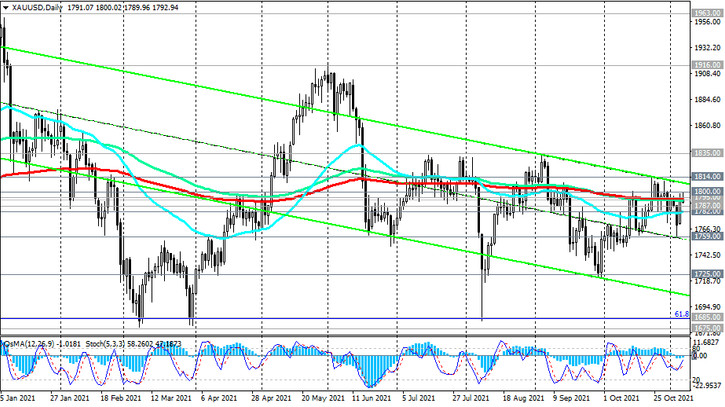The first week of November is coming to an end, which turned out to be extremely rich in economic news and important events. During it, 3 largest world central banks (of Australia, Great Britain, USA) held their meetings at once. There were some surprises. In particular, market participants expected from the Bank of England, if not an increase in the interest rate, then, at least, the beginning of curtailing the stimulating program of quantitative easing.
Perhaps the Bank of England's Monetary Policy Committee wanted to be cautious given the lack of sufficient information on structural changes in the labor market. Following the meeting on Thursday, the Bank of England left its key rate unchanged, while market participants expected it to rise by 15 basis points from the current level of 0.1%.
The pound fell sharply after the meeting of the Bank of England. However, its fall is likely to be limited, as the Bank of England said that "in the coming months, it will be necessary to raise the rate to bring inflation back to the 2% target on a sustainable basis".
The Reserve Bank of Australia also kept the interest rate at the current 0.1%, but announced that it would no longer manage the yield curve.
Other measures to stimulate the economy remained in place. The central bank said it will continue to buy A $ 4 billion in government bonds a week until at least mid-February. The central bank also no longer believes that the key interest rate will not be raised until 2024. RBA Governor Philip Lowe said a rate hike in 2023 is now possible, but he stressed that the central bank is willing to be patient, in part because it is not known how long supply chain disruptions will last. Thus, the RBA joined other central banks to tighten monetary policy amid rising inflationary risks.
But the most clear statement about the prospects of its monetary policy was expressed by the US central bank, whose meeting ended last Wednesday. Although Jerome Powell reiterated at the press conference that the central bank will not rush to raise interest rates, since the labor market has not yet fully recovered, and he still considers increased inflation to be temporary, the Fed officials approved a plan to curtail the purchase program assets (this process will begin in November and should end by June next year), although interest rates have remained unchanged, close to zero (the target range for the federal funds rate remained the same, 0.00% -0.25%). The Fed will cut bond purchases by 15 billion in November and another 15 billion in December. In the opinion of its management, such a reduction in the volume of acquired assets "is likely to be appropriate every month".
One way or another, the Fed has nevertheless begun to roll back its stimulating policy, and this process is likely to proceed at a faster pace than in other major world central banks. And this will create prerequisites for strengthening the dollar against its main competitors in the foreign exchange market.
Market participants will be watching the release (at 12:30 GMT) of the monthly US nonfarm payrolls today. Economists expect another increase in the number of jobs created in October, to 425 thousand from 194 thousand last month, and a decrease in the unemployment rate by another 0.1%, to 4.7%, which will be further evidence of the ongoing recovery of the American labor market. These are encouraging indicators for US stock market participants and dollar buyers, and it continues to strengthen. Earlier Jerome Powell said that changes in the labor market will play a key role in determining when exactly the central bank will raise interest rates.
At the time of this posting, DXY futures are traded near 94.53, at levels reached in mid-October and in line with 13-month-old levels.
At the same time, before the publication of the NFP, gold quotes, which yesterday rose significantly after the Bank of England did not dare to raise the interest rate, fluctuate. However, by the time this article was published, the XAU / USD pair had stabilized in the area of the key resistance levels of 1795.00, 1800.00.
Gold quotes are extremely sensitive to changes in the monetary policy of the world's largest central banks, primarily the Fed. But, if the Fed continues to refrain from raising the interest rate while inflation continues to rise, then one should expect an increase in quotations of this precious metal.

Remaining below the key resistance levels of 1795.00, 1800.00, XAU / USD is in the mid-term bear market zone. However, the breakout of these resistance levels could provoke further strengthening of the pair.
Thus, today at 12:30 (GMT), a sharp increase in volatility in the dollar and XAU / USD quotes is expected, respectively.
According to ADP data released on Wednesday, 571,000 new jobs were created in the US private sector in October, which is higher than economists' forecast of +400,000. This indicator is considered a harbinger of official data from the Ministry of Labor, which will be published today. But if they do not meet the market expectations and come out with values much lower than the forecast, then we should expect the dollar to weaken and XAU / USD to grow.





